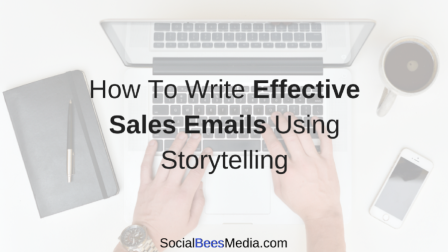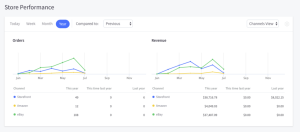Email Marketing is not dead! In fact, many marketers and business owners still consider it to be one of the best converting Online Marketing channels. Read our article this week to learn how to write effective sales emails and improve the ROI of your Email Marketing efforts with storytelling.

Why Use Email Marketing For Sales?

Did you know that Email marketing is 40 times more successful at acquiring new customers than both Twitter and Facebook? Moreover, 66% of online consumers have purchased a product or service as a result of an email. This and other interesting Email data prove that Email is still one of the most effective Online Marketing channels for Sales.
How To Use Storytelling In Email Marketing To Sell
There are many approaches that can be considered when you want to write an Email with Sales purposes. In this article, we would like to introduce you to one of the most successful approaches that we have come across – using stories to sell.
The Idea:
Tons of businesses out there use stories to build an emotional relationship with their customers. But storytelling can also be used to engage, persuade and convert strangers to clients.
Why do people respond so well to storytelling? Humans have been communicating through stories for decades and in our everyday lives stories and gossip take up more than half of all conversations. Stories can be used to create experiences that later influence decisions.
Continue reading below to discover what are the elements of an effective sales email using storytelling as its base:
The Story Elements:
We would like to suggest that you use some, or all of the following elements when writing your sales email:
- A relatable character – stories are usually about people. Use your brand’s persona as a base to create someone that your prospects would relate to. Give them a name and a short background story;
- A problem – Use your story to build the vision of a ‘problem’ that your character experienced. This problem should be one that your product or service can solve. Touch up on your audiences insecurities: The character is embarrassed or unsatisfied because his problem interfered with his work or personal life;
- The ‘We have all been there’ moment – show empathy. The email you are writing does not aim to shame or blame the readers. It is supposed to make them feel emotional and engaged but they should know that their problem is one anyone can be going through;
- “So what went wrong?” – Analyze the story and the problem. What could the character have done differently to avoid having this issue;
- The vision – Create a vision of how your character finally managed to solve his problem and how did it make him feel, what changed in his personal or work life;
- The solution – By the very end of your email, shortly introduce the readers with your product or service and its unique selling points;
- The gut check question – Here is the moment to urge the readers. Ask them if they are ready to change, to solve their problems;
- The CTA – Leave the link with call to action for the end of the story;
The Subject Line:
There are a couple of tips we would like you to consider regarding writing an email subject line that can actually boost your sales:
- Avoid the sales pitch;
- Tease the recipients – give them a hint that they are going to read a story;
- Keep it short- as you would see in the graph below, subject lines that are in between 28-39 characters receive the highest CTR.
The key to writing great subject lines for sales emails is testing. Try to find the subject lines that work best for you by split testing
To conclude with, the most important factor for writing effective emails that sell is to really know your target audience – to understand what are your prospects’ buying behaviours and what motives them to make a purchase. There are many case studies that can help you do your research, test and find our what works best for you and your business.
How do you use Email Marketing for your business goals? Don’t hesitate to share with us in the comment section below.
Digital & Social Articles on Business 2 Community(100)

 [
[





